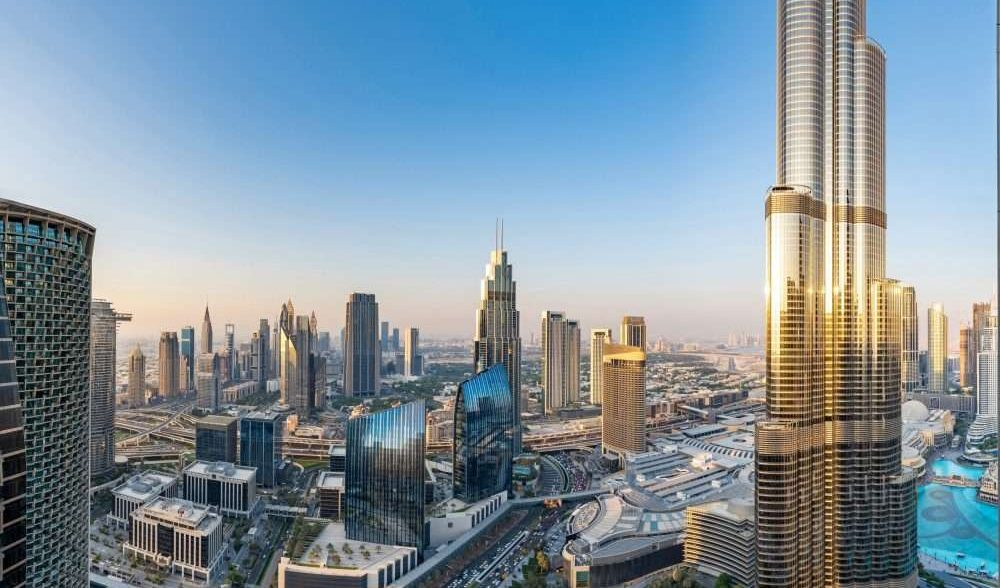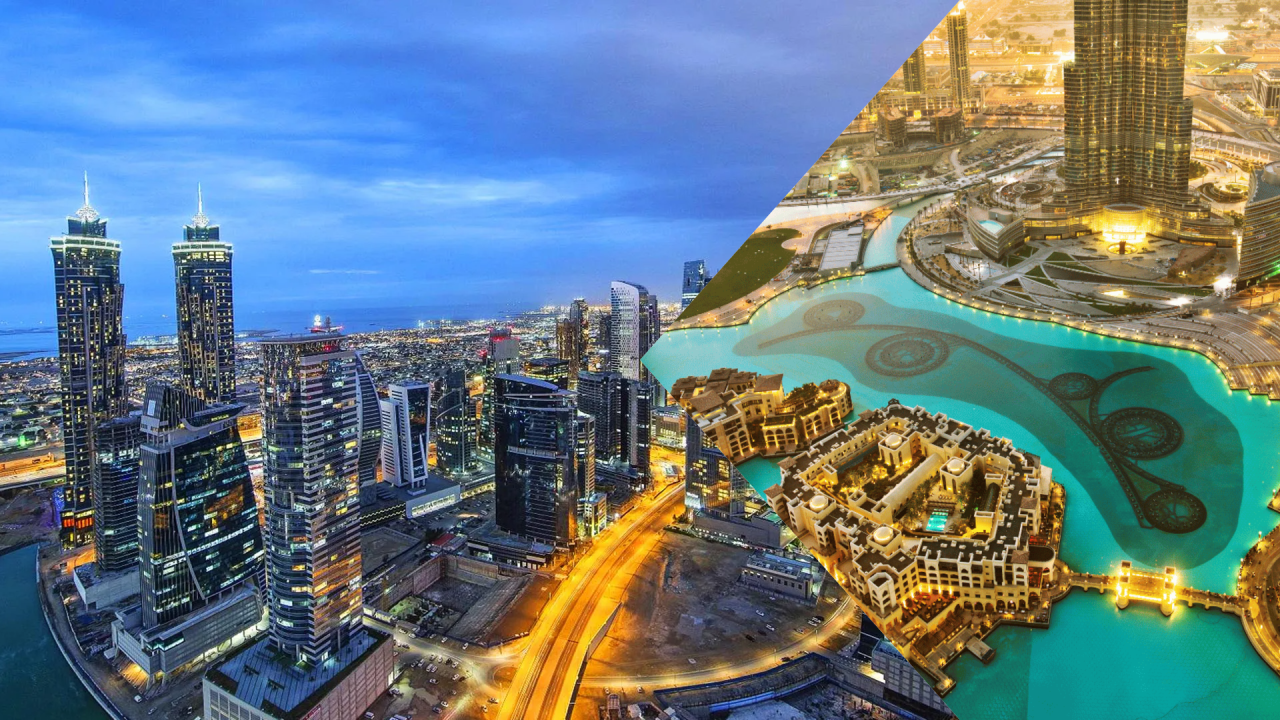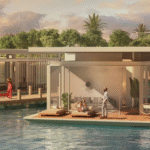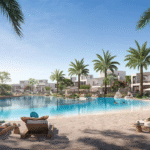Now Reading: Navigating the UAE Real Estate Market: Top Investment Strategies for 2025
-
01
Navigating the UAE Real Estate Market: Top Investment Strategies for 2025
Navigating the UAE Real Estate Market: Top Investment Strategies for 2025

Table of Contents
The UAE real estate market, valued at AED 1 trillion in 2024 with over 300,000 transactions, remains a global investment hub as of May 31, 2025. Dubai leads with AED 761 billion, followed by Abu Dhabi and Sharjah, driven by the Dubai 2040 Urban Master Plan, Abu Dhabi Economic Vision 2030, and investor-friendly policies. Despite a projected 3–5% price correction in non-prime areas due to 100,000 new units, prime locations offer 5–8% appreciation and 6–9% yields. Leveraging PropTech, Law No. 16 of 2023 for sustainability, and high-value employment tax credits, investors can target off-plan projects, smart homes, and emerging areas. This analysis outlines top investment strategies, opportunities, challenges, and recommendations for Dubai, Abu Dhabi, and Sharjah in 2025.
1. Overview of the UAE Real Estate Market in 2025

Market Dynamics
- Performance: 40% transaction volume growth and 25% value increase in 2024, totaling AED 1 trillion across the UAE.
- Price Correction: 3–5% decline in non-prime areas (e.g., Dubai’s JVC, Sharjah’s Al Nahda) due to 100,000-unit supply; prime areas (Dubai Marina, Abu Dhabi’s Saadiyat Island) see 5–8% growth.
- Demand Drivers: UAE population projected at 10.5 million by 2030, 30 million tourists by 2026, and Golden Visa eligibility (AED 2 million investment).
- Policy Support:
- Dubai 2040 Urban Master Plan: Targets 60% green spaces, “20-minute city.”
- Abu Dhabi Economic Vision 2030: Focuses on sustainability, diversification.
- UAE Clean Energy Strategy 2050: Promotes net-zero homes.
- Law No. 16 of 2023: Mandates green building standards in Dubai, adopted in Sharjah.
Emirate-Specific Trends
- Dubai: AED 761 billion in 2024, 226,000 transactions, 6–9% yields in prime areas like Downtown.
- Abu Dhabi: AED 150 billion, 50,000 transactions, 5–7% yields in Saadiyat, Yas Island.
- Sharjah: AED 20 billion, 25,000 transactions, 5–7% yields in Aljada, affordable at AED 639,000–1.5 million.
Key Segments
- Residential: 65% of transactions, villas yield 7–9%, apartments 6–8%.
- Commercial: 5–7% growth in Dubai’s DIFC, Abu Dhabi’s Al Maryah Island.
- Off-Plan: 45% of Dubai sales, 30% in Abu Dhabi, driven by flexible plans.
- Luxury: Properties above AED 15 million grow 8–10% in Dubai’s Palm Jumeirah, Abu Dhabi’s Saadiyat.
2. Opportunities in the UAE Real Estate Market

Dubai
- Off-Plan Projects: Emaar Beachfront (AED 2–4 million), Sobha Hartland (AED 1.5–3 million) offer 7–9% yields with 40/60 plans. Example: AED 2 million Emaar villa yields AED 140,000–180,000 annually by 2028.
- Prime Areas: Downtown, Dubai Marina provide 6–9% yields, 5–8% growth.
- Smart Homes: The Sustainable City, The Valley command 10–15% premiums, 20–30% utility savings.
- Short-Term Rentals: 8–12% yields in Dubai Marina with 25 million tourists by 2026, DET permit AED 1,520/year.
Abu Dhabi
- Emerging Areas: Saadiyat Island, Yas Island offer 5–7% yields, 5–6% growth with cultural and tourism projects (e.g., Guggenheim Abu Dhabi). Example: AED 1.8 million Saadiyat apartment yields AED 90,000–126,000 annually.
- Off-Plan: Aldar’s Yas Canal (AED 1.2–2.5 million) with 50/50 plans, 6–8% yields.
- Sustainability: Masdar City’s net-zero projects offer 10% premiums.
Sharjah
- Affordable Investments: Aljada, Sharjah Sustainable City (AED 639,000–1.5 million) yield 5–7%. Example: AED 1 million Aljada unit yields AED 50,000–70,000 annually.
- Developer Plans: 5–10% down payments, 3–5-year terms enhance accessibility.
- Industrial Growth: Sharjah’s free zones (e.g., SAIF Zone) drive commercial demand, 4–6% yields.
Tax Incentives
- High-Value Employment Tax Credits: 10–15% credits on salaries (e.g., AED 300,000 on AED 3 million), effective January 1, 2025.
- Corporate Tax: 0% for QFZPs in free zones, 9% on profits above AED 375,000.
3. Challenges in the UAE Real Estate Market
Financial
- Upfront Costs: 20–30% down payments (AED 400,000–600,000 for AED 2 million property), 4% DLD/SRERD fees, 2% broker fees per February 2025 directive.
- Financing Costs: EIBOR-linked mortgages (3–5%) may rise, increasing repayments.
- Compliance Costs: TP documentation and green certifications add 10–15% expenses.
Regulatory
- Corporate Tax: 9% on profits above AED 375,000, 7-year IFRS records, audits for revenues above AED 50 million.
- Transfer Pricing: RPTs above AED 40 million require documentation, with AED 1 million penalties.
- DMTT: 15% for MNEs (≥ €750 million revenue) from January 1, 2025.
- Sustainability: Law No. 16 of 2023 mandates LEED standards, raising costs by 10–15%.
Market
- Oversupply: 100,000 units (76,000 in Dubai, 15,000 in Abu Dhabi, 10,000 in Sharjah) risk 3–5% price drops in non-prime areas.
- Competition: Over 3,000 real estate firms across UAE dilute demand.
- Global Risks: Oil price volatility and geopolitical tensions may deter 25% of non-resident buyers.
Technical
- PropTech Costs: Tools like TPGenie, Dubai REST cost AED 10,000–50,000 annually.
- Developer Risks: Off-plan delays affect ROI timelines, especially in Dubai and Abu Dhabi.
4. Top Investment Strategies for 2025
Investment Strategies
- Off-Plan Investments:
- Target Emaar Beachfront, Sobha Hartland (Dubai), Aldar’s Yas Canal (Abu Dhabi) with 40/60 or 50/50 plans, 10–20% initial payments.
- Example: AED 2 million Sobha villa, AED 400,000 down, yields 7–9% by 2028.
- Prime and Emerging Areas:
- Invest in Dubai’s Downtown (6–9% yields), Abu Dhabi’s Saadiyat Island (5–7%), or Sharjah’s Aljada (5–7%).
- Example: AED 1.8 million Saadiyat apartment yields AED 90,000–126,000 annually.
- Smart and Net-Zero Homes:
- Focus on Dubai’s The Valley, Abu Dhabi’s Masdar City, Sharjah’s Sustainable City for 10–15% premiums, 20–30% savings.
- Example: AED 2.5 million Valley villa yields AED 175,000–225,000 annually.
- Short-Term Rentals:
- Develop holiday homes in Dubai Marina, Abu Dhabi’s Yas Island for 8–12% yields, leveraging 30 million tourists.
- Example: AED 2 million Marina apartment yields AED 160,000–240,000 annually.
- Diversified Portfolio:
- Allocate 50% to Dubai prime/off-plan, 30% to Abu Dhabi emerging, 20% to Sharjah affordable properties.
- Example: AED 1 million Aljada unit yields AED 50,000–70,000 annually.
Operational Strategies
- Compliance Management:
- Register with EmaraTax by March 31, 2025, use TPGenie for TP documentation.
- Engage Deloitte, KPMG for CT, DMTT compliance in Q4 2025.
- PropTech Adoption:
- Use Dubai REST, Property Finder, Huspy for analytics, reducing risks by 15–20%.
- Example: Property Finder’s VR tours save AED 10,000 in viewing costs.
- Financing Optimization:
- Secure fixed-rate mortgages (3–5%) via Mortgage Finder, budget AED 60,000–120,000 for fees.
- Partner with developers for 0% interest off-plan plans (e.g., Binghatti’s 35% completion financing).
Sustainability Strategies
- Green Investments:
- Target LEED-certified projects like Dubai’s Sustainable City, Abu Dhabi’s Masdar City for 10–15% premiums.
- Smart Homes:
- Develop IoT-enabled properties for 20–30% energy savings.
- Tourism-Focused Properties:
- Invest in eco-tourism in Dubai’s Hatta, Abu Dhabi’s Yas Island (AED 3 million, 6–8% ROI).
Risk Mitigation
- Cost Management:
- Use high-value employment tax credits (AED 300,000 on AED 3 million salary).
- Market Monitoring:
- Track DLD, ADRE, SRERD data to avoid oversupplied areas.
- Due Diligence:
- Verify developer escrow accounts via RERA (Dubai), ADRE (Abu Dhabi), SRERD (Sharjah).
- Diversification:
- Spread investments across emirates to balance risks.
5. Recommendations for 2025
- Immediate Actions (Q1–Q2 2025):
- Action: Register with EmaraTax by March 31, 2025, invest in Emaar Beachfront off-plan (AED 2 million, 7–9% yield) with 20% down.
- Example: AED 2 million villa, AED 400,000 initial, yields AED 140,000–180,000 by 2028.
- Rationale: Secures low rates, avoids correction impact.
- Strategic Investments (2025):
- Action: Target Dubai’s Dubai Creek Harbour, Abu Dhabi’s Saadiyat Island, or Sharjah’s Aljada for 5–7% growth, using 0% CT in free zones.
- Example: AED 1.8 million Saadiyat apartment yields AED 90,000–126,000 annually.
- Rationale: Leverages emirate-specific growth drivers.
- Diversified Portfolio:
- Action: Allocate 50% to Dubai (AED 2 million, 7–9% yield), 30% to Abu Dhabi (AED 1.2 million, 5–7% yield), 20% to Sharjah (AED 639,000, 5–7% yield).
- Example: AED 1 million Aljada unit yields AED 50,000–70,000 annually.
- Rationale: Balances risk and returns.
- Long-Term Vision (2026–2040):
- Action: Develop smart, net-zero homes in Dubai’s The Valley, Abu Dhabi’s Masdar City for 7–10% ROI by 2035, targeting 30 million tourists.
- Example: AED 2.5 million smart villa yields AED 175,000–225,000 annually.
- Rationale: Aligns with Net-Zero 2050 and tourism growth.
- Operational Excellence:
- Use PropTech (Dubai REST, TPGenie), engage KPMG for compliance, apply for Emirates Energy Award 2025 by March 1, 2025.
Conclusion
As of May 31, 2025, the UAE real estate market offers robust opportunities despite a 3–5% price correction in non-prime areas, with 6–9% yields and 5–8% growth in prime locations. Dubai’s off-plan and prime properties, Abu Dhabi’s emerging areas, and Sharjah’s affordable investments provide diverse options. Challenges like oversupply, CT/TP compliance, and EIBOR risks are mitigated through PropTech, diversified portfolios, and sustainable projects. By leveraging strategic investments and compliance tools, investors can navigate the UAE’s dynamic market for long-term wealth creation by 2040.
Overview
- Market: AED 1T in 2024, 300,000+ transactions, 5% growth in 2025.
- Correction: 3–5% price decline in non-prime (JVC, Al Nahda), 5–8% growth in prime (Marina, Saadiyat).
- Drivers: 10.5M population by 2030, 30M tourists by 2026, Dubai 2040, Abu Dhabi 2030, Clean Energy Strategy.
- Emirates: Dubai (AED 761B, 6–9% yields), Abu Dhabi (AED 150B, 5–7% yields), Sharjah (AED 20B, 5–7% yields).
Opportunities
- Dubai: Emaar Beachfront (AED 2M, 7–9% ROI), Downtown (6–9% yields), smart homes (10–15% premiums), rentals (8–12% yields).
- Abu Dhabi: Saadiyat, Yas Island (AED 1.8M, 5–7% yields), Masdar City (10% premiums).
- Sharjah: Aljada (AED 1M, 5–7% yields), SAIF Zone commercial (4–6% yields).
- Tax Incentives: 10–15% credits, 0% CT for QFZPs.
Challenges
- Financial: 20–30% down, AED 60K–120K fees, 10–15% compliance costs.
- Regulatory: 9% CT, TP (RPTs > AED 40M), 15% DMTT, LEED standards.
- Market: 100,000-unit supply, 3,000+ firms, global risks.
- Technical: PropTech costs (AED 10K–50K), off-plan delays.
Strategies
Investment
- Off-Plan: Emaar, Aldar (AED 2M, 7–9% ROI).
- Areas: Downtown, Saadiyat, Aljada (5–9% yields).
- Smart/Net-Zero: Valley, Masdar (AED 2.5M, 7–9% yields).
- Rentals: Marina, Yas Island (8–12% ROI).
- Portfolio: 50% Dubai, 30% Abu Dhabi, 20% Sharjah.
Operational
- Compliance: EmaraTax by March 31, 2025, TPGenie, KPMG.
- PropTech: Dubai REST, Property Finder (15–20% risk reduction).
- Financing: Fixed-rate mortgages (3–5%), 0% developer plans.
Sustainability
- Green Projects: Sustainable City, Masdar (10–15% premiums).
- Smart Homes: IoT for 20–30% savings.
- Tourism: Hatta, Yas Island (AED 3M, 6–8% ROI).
watch more
read more: Net-Zero Communities: The Future of Sustainable Living in the UAE






















